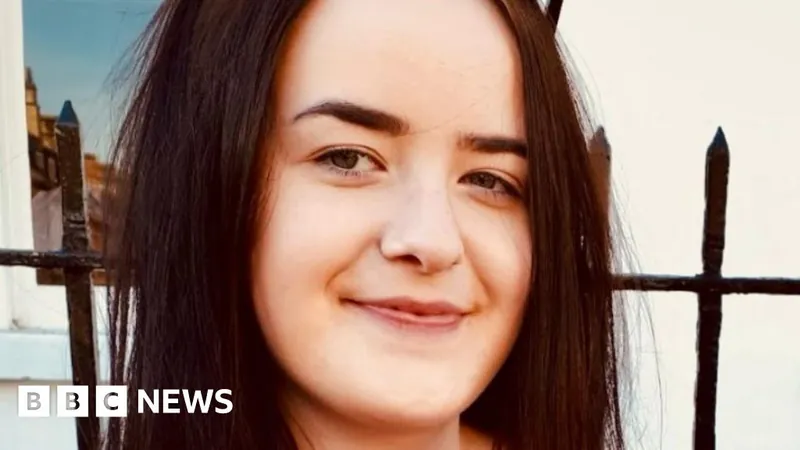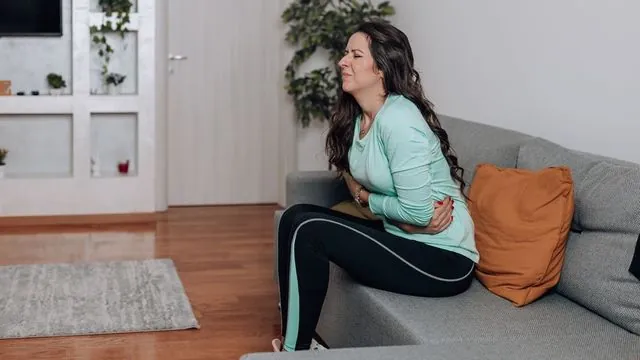
The Struggle for Relief: Emily Griffiths Battles Endometriosis While Seeking Hysterectomy
2024-11-17
Author: Mei
Introduction
Emily Griffiths, 26, from Carmarthenshire, Wales, finds herself at a crossroads in her health journey. Despite her desire to undergo a hysterectomy to alleviate debilitating symptoms caused by endometriosis and adenomyosis, she faces significant barriers due to her age and the healthcare system's focus on fertility.
Early Struggles
Emily's battle began at the tender age of 12 when intense menstrual pain and heavy bleeding forced her to miss school and ultimately led to anemia. For years, she was dismissed by general practitioners who told her the pain was merely normal. It wasn't until she collapsed with sepsis at 21 that she was diagnosed with endometriosis.
Understanding Endometriosis and Adenomyosis
Endometriosis occurs when tissue similar to the uterine lining grows outside the womb, leading to severe pain, heavy periods, and other troubling symptoms. Adenomyosis, another painful condition, involves the uterine lining growing into the muscle wall of the womb, causing similar issues. Today, Emily suffers from widespread endometriosis on her ovaries, bladder, and part of her bowel, compounded by a recent diagnosis of adenomyosis.
Challenges in Treatment
After years of ineffective treatments, including a monthly injection to induce menopause and numerous visits to private specialists, Emily is frustrated by a healthcare system that seems more focused on potential future pregnancies than her current suffering. "Doctors are too busy planning ahead for the child I might want," she laments. "They can't see where I am right now."
The Hysterectomy Dilemma
A hysterectomy could potentially relieve many of her symptoms, particularly her adenomyosis, but it would leave her infertile and could introduce new health risks. The complexity of Emily's case requires specialized care to ensure that any procedure adequately addresses the endometriosis as well.
Systemic Issues and Financial Burdens
While a total hysterectomy is recognized as a treatment option by the National Institute for Health and Care Excellence (NICE), it doesn't guarantee pain relief, and Emily feels increasingly unheard. "Fertility has been put way above any of my illnesses," she states emphatically.
Adding insult to injury, the limited number of accredited NHS endometriosis centers in Wales only complicates her situation further. With long waits for NHS specialists, Emily has turned to private care, incurring significant financial costs for surgeries and ongoing treatment. “No one on the NHS will monitor me currently, so it becomes a never-ending cycle of funding and finding the right person,” she explains.
Advocacy and Recognition
Emily's plight has captured the attention of prominent figures, including the King and the Princess of Wales, who have recognized her efforts to raise awareness about the challenges faced by endometriosis patients. Despite her hardships, she clings to the hope that sharing her story can lead to improvements in women’s health care.
Call for Change
As discussions continue at the governmental level regarding women's health initiatives, including a newly promised 10-year women’s health plan, advocates like Sioned Williams, Plaid Cymru's spokesperson for social justice, urge immediate change. “People with endometriosis, like Emily, just want to be heard and believed,” she emphasizes.
Conclusion
While Emily battles through her pain, her fight continues—not just for her health but for the rights of women to have their voices heard within the healthcare system. “It’s about time we prioritize the reality of women’s health issues over future fertility,” she asserts, pushing for recognition that chronic pain doesn’t wait for a suitable time to be addressed.
The path forward may be uncertain, but Emily's advocacy shines a light on the vital need for nuanced dialogue and action in women’s health care, with the hope that no woman will have to endure the kind of struggle she has faced.


 Brasil (PT)
Brasil (PT)
 Canada (EN)
Canada (EN)
 Chile (ES)
Chile (ES)
 España (ES)
España (ES)
 France (FR)
France (FR)
 Hong Kong (EN)
Hong Kong (EN)
 Italia (IT)
Italia (IT)
 日本 (JA)
日本 (JA)
 Magyarország (HU)
Magyarország (HU)
 Norge (NO)
Norge (NO)
 Polska (PL)
Polska (PL)
 Schweiz (DE)
Schweiz (DE)
 Singapore (EN)
Singapore (EN)
 Sverige (SV)
Sverige (SV)
 Suomi (FI)
Suomi (FI)
 Türkiye (TR)
Türkiye (TR)